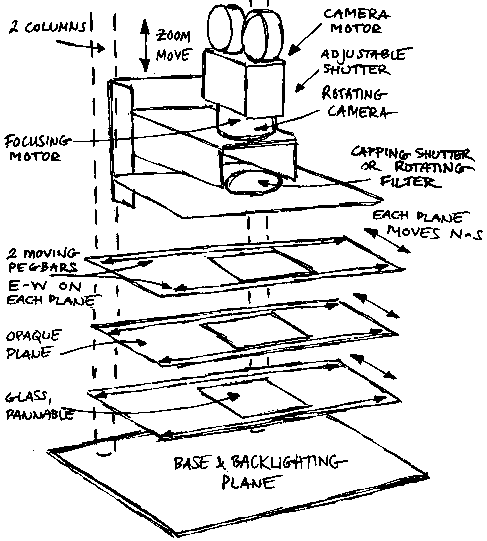
comparison
essay
The live action curse breaker: One Piece

Have you ever heard of the live action anime adaptation curse? This curse often happened in western filmmakers adapting Japanese anime into movies (Daniel ,2023). However, In the past few years, almost all adaptation films or television series falls flat on the face due to the difference of manga and live action filmmaking. There are a lot of constraints in live action filmmaking, compared to the limitless imagination of anime.
However, in 2023, the Netflix One Piece series successfully break the curse with high production costs and direct supervision from the author of the manga, Eiichiro Oda. The Netflix One Piece series gains great reviews from critics and audiences. Although they have some similarity in these works, like the overall narrative of the East Blue Saga (Tulisha,2023), they have several differences such as visual art styles, story length, and how characters and villains were introduced.






Although these stories both shared an over the top pirate world setting, the major difference lies in the art styles. In One Piece anime, 2D animation allows limitless imaginations in world building and character actions at a cost of being realistic. The anime often features simple colors and traditional 2D technique to illustrate the depth of the world.
For example, by multiplaning (Amy, 2021) different layers of celluloid pictures (Wikipedia, 2023), animators can simulate movements and depth in a pseudo 3D environment. These techniques allow animators to create unrealistic environment without breaking the immersion too much. With anime’s colorful and limitless imagination, it’s easier to appeal to younger audiences. However, under the live action camera, the film needs to be shot with full scale props, green screens, and advanced computer-generated graphics to maintain the immersion. Hence, a lot of 2D animation tricks simply don’t work in live action.
Anime also allows extreme facial and body postures on characters without looking weird. Namely, audiences can comfortably accept the artistical setting of stretchy hands and legs with our main protagonist: Luffy. While in live action Luffy’s movements will be limited by cinematic reality and human ergonomics. Overall, these constraints allow filmmakers to create a realistic world, which will fit into today’s mature audiences’ preferences.
The Visual art design in movies and anime comes with its unique identities, which can both satisfy different audiences. With well art design and imaginations, we can enjoy both visual styles while enjoying the stories.

Another difference between these works is the arrangement of storytelling, which can be huge when it comes to run time of the show. For example, in the One Piece anime the story of the East Blue Saga lengths around fifty episodes, or approximately 1000 minutes. Compared to the 451 minutes, eight episodes live action series. Extremely high production costs forced writers and directors cut story details and side characters. This can result some of the popular side characters become completely absent or became a short screen cameo.
In order to streamline the story, a lot of multiple episodes long fight scenes are shrunk to several stunt choreography, which might make the storyline easier for new audiences to follow. However, for long time fans, the absents of critical story details are compromises in the name of accessibility. To be short, the anime and the live action style storytelling both have its pros and cons, it’s up to the audience to prefer whether they want a complex slow-paced narrative story, or a fast-streamlined action film.





Finally, one other difference is related to how character personalities related in both works. In the anime, the introduction of these characters often features a great deal of screen time, written in an exaggerated style of humor, with multiple supporting characters interacting with silly jokes and over the top action.
In the Netflix show, the humor presented by the character dialed down a significant amount to fit the realistic tone of the series. Instead of goofy jokes and stupid side plots, the Netflix show focused on main characters internal struggle with moral conflicts and personal trauma, which gave the audiences a new perspective to each character’s backstory. The anime also introduces villains with multi-episodes long complex backstories and setting up future re-matches for the heroes to overcome.
While in the live action villains’ introductions become short and precise, often focusing on fighting gimmicks and cinematic effects, leaving room for audiences to check out the source material if they are interested. In short, both works shows story telling are different with its own style. No matter which version of the story telling arrangement, characters are vital to the success of a series.
When comparing the anime and live action adaptations, people often jump to conclusions without truly accept the uniqueness of these different medium. Sometimes, with the right people behind the development, clever art techniques, well-paced story and characters, live action adaptations can stand toe to toe with its original anime source. The Live Action One Piece marked as the first true step of a successful adaptation of anime, even though it still has its fair share of weakness. All in all, it doesn’t matter if you are a long running One Piece anime fan, or a new audience draw in by the live action adaptation. With more options, it’s easier for us to introduce the One Piece to audiences around the world.
References:
1.Tulisha srivastava, (2023, Sep 8). One Piece: 8 major differences between anime and live-
action. Dexerto
https://www.dexerto.com/anime/one-piece-differences-between-anime-and-live-action
2275403/
2.Daniel Kurland, (2023, Aug 31).Netflix’s One Piece Breaks the Live-Action Anime Curse.
Den Of Geek
https://www.denofgeek.com/tv/netflixs-one-piece-breaks-the-live-action-anime-curse/
3. Traditional animation. (2023, Nov 8). In Wikipedia.
https://en.wikipedia.org/wiki/Traditional_animation
4. Amy Onorato. (2021, Aug 4). Multiplaning magic: How Layers Add Depth to 2D
Animations. Idea Rocket
https://idearocketanimation.com/20009-multiplaning-animation-history/




